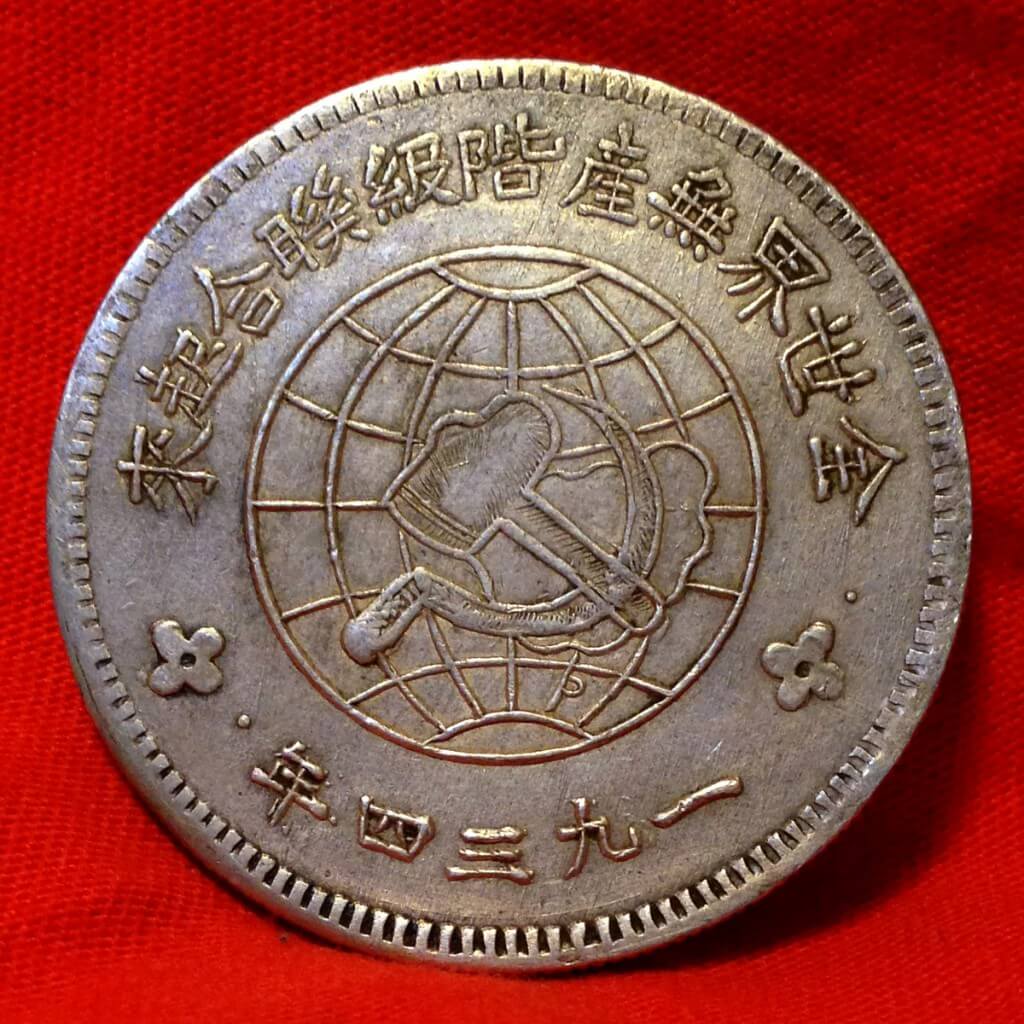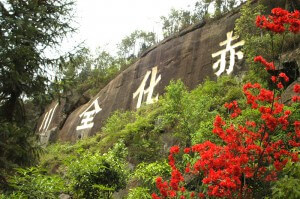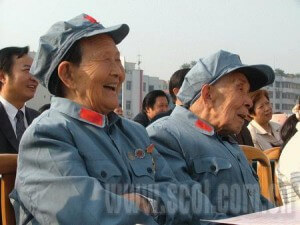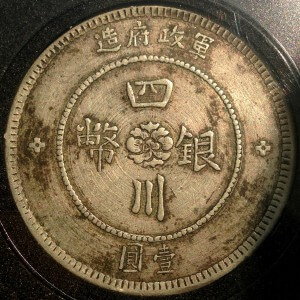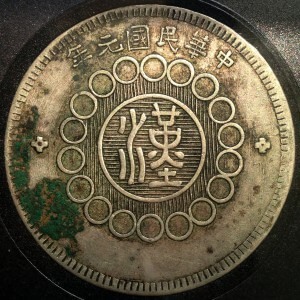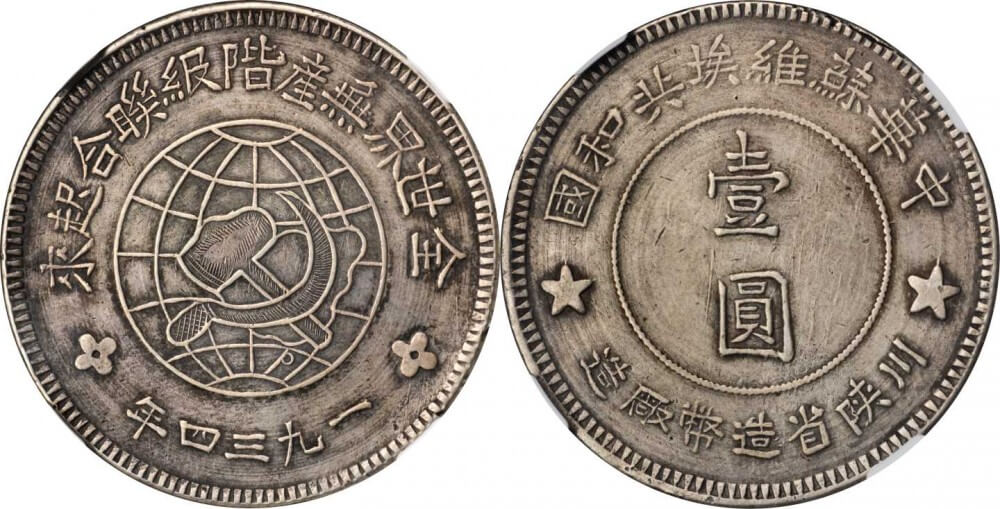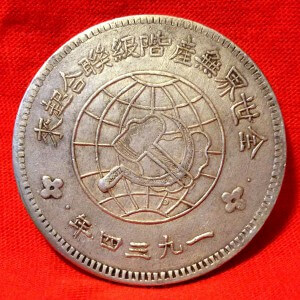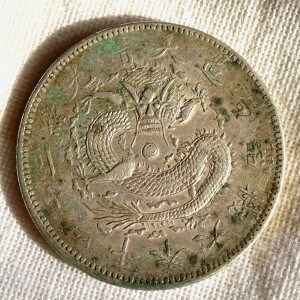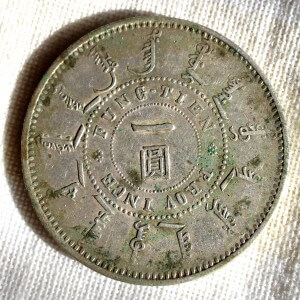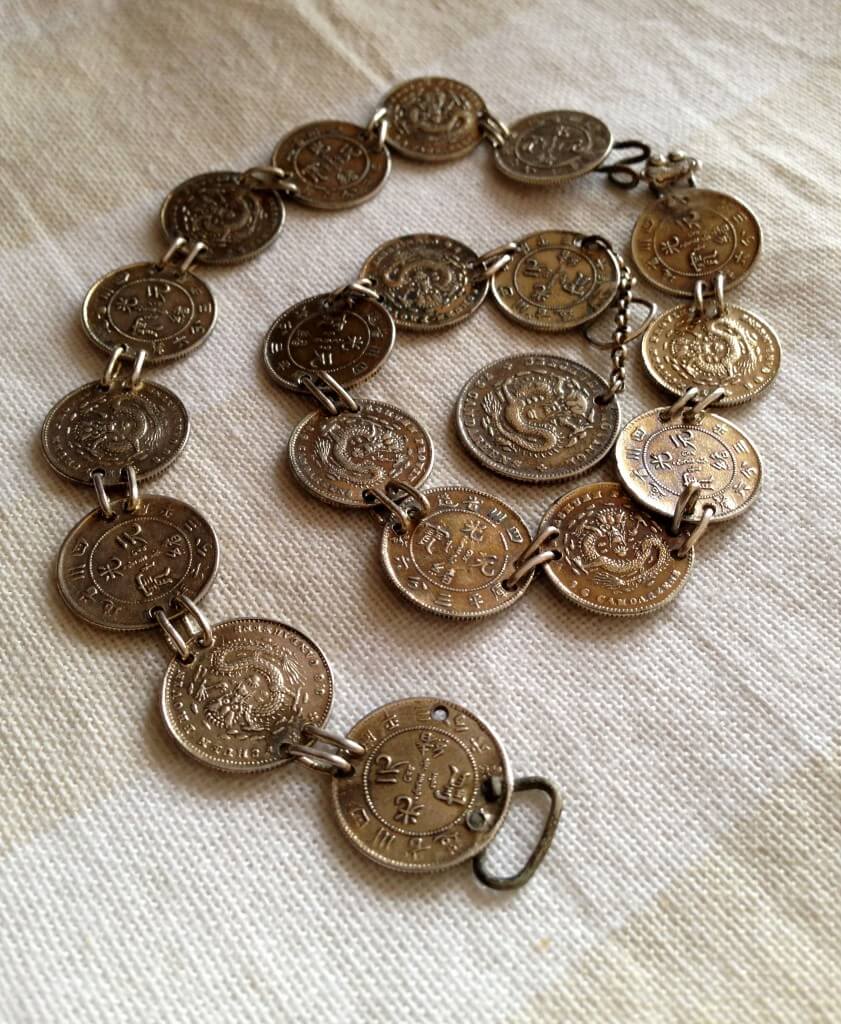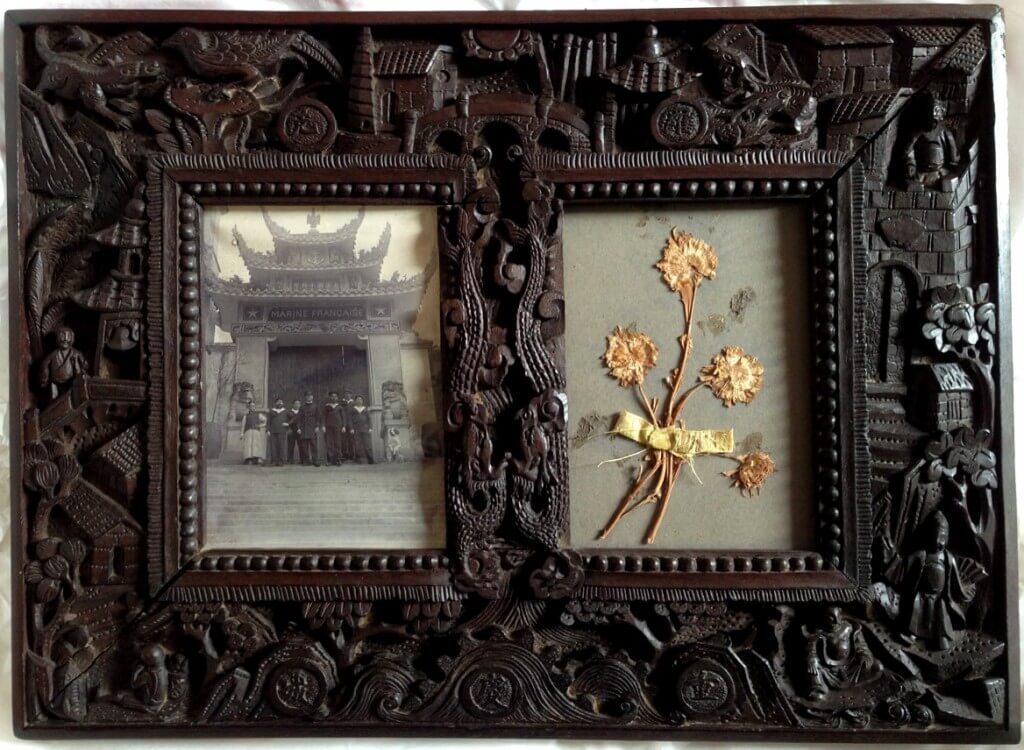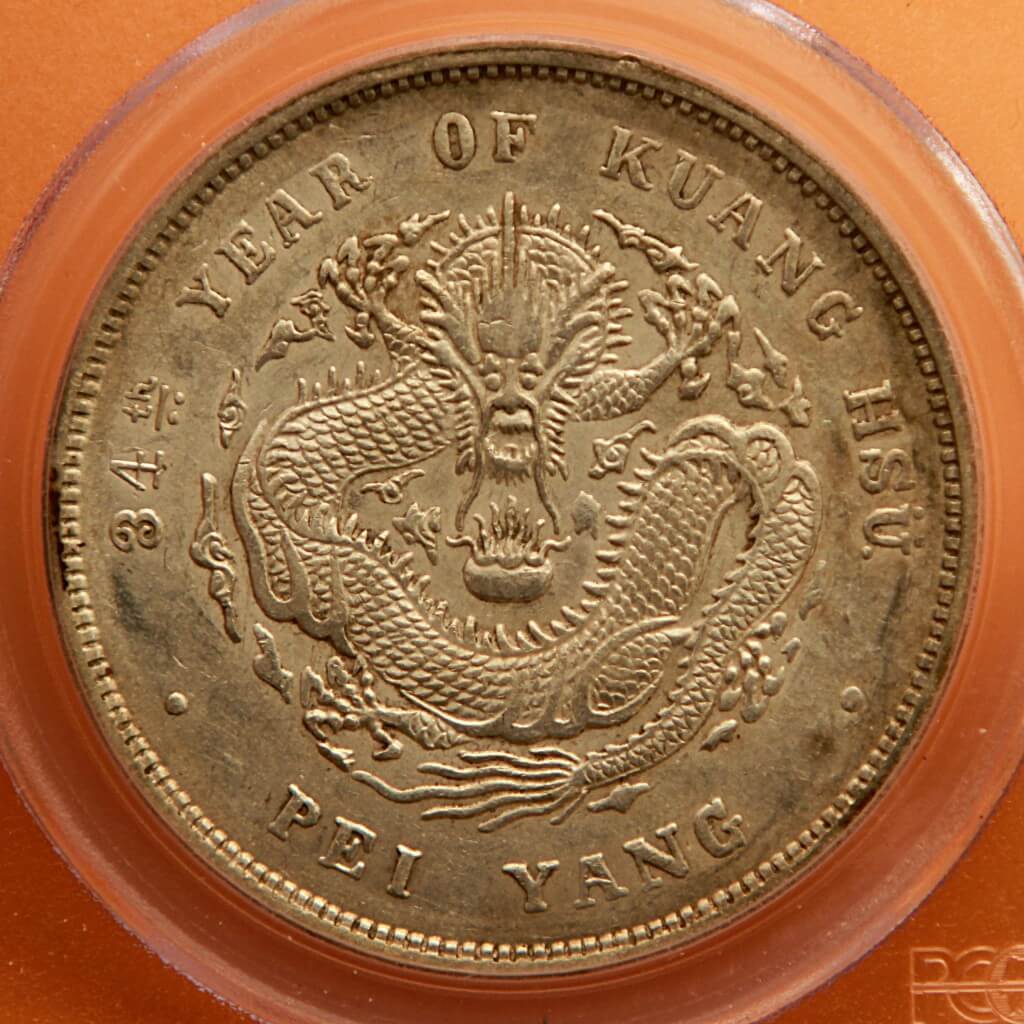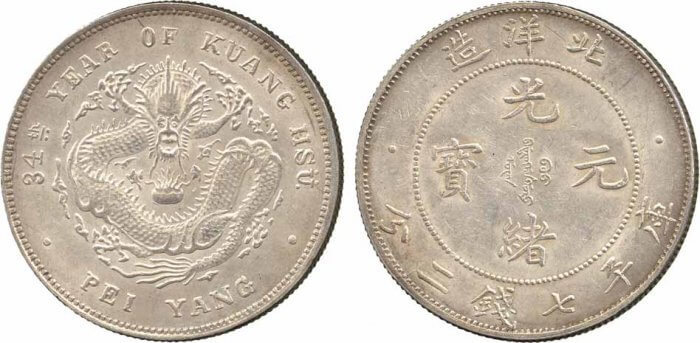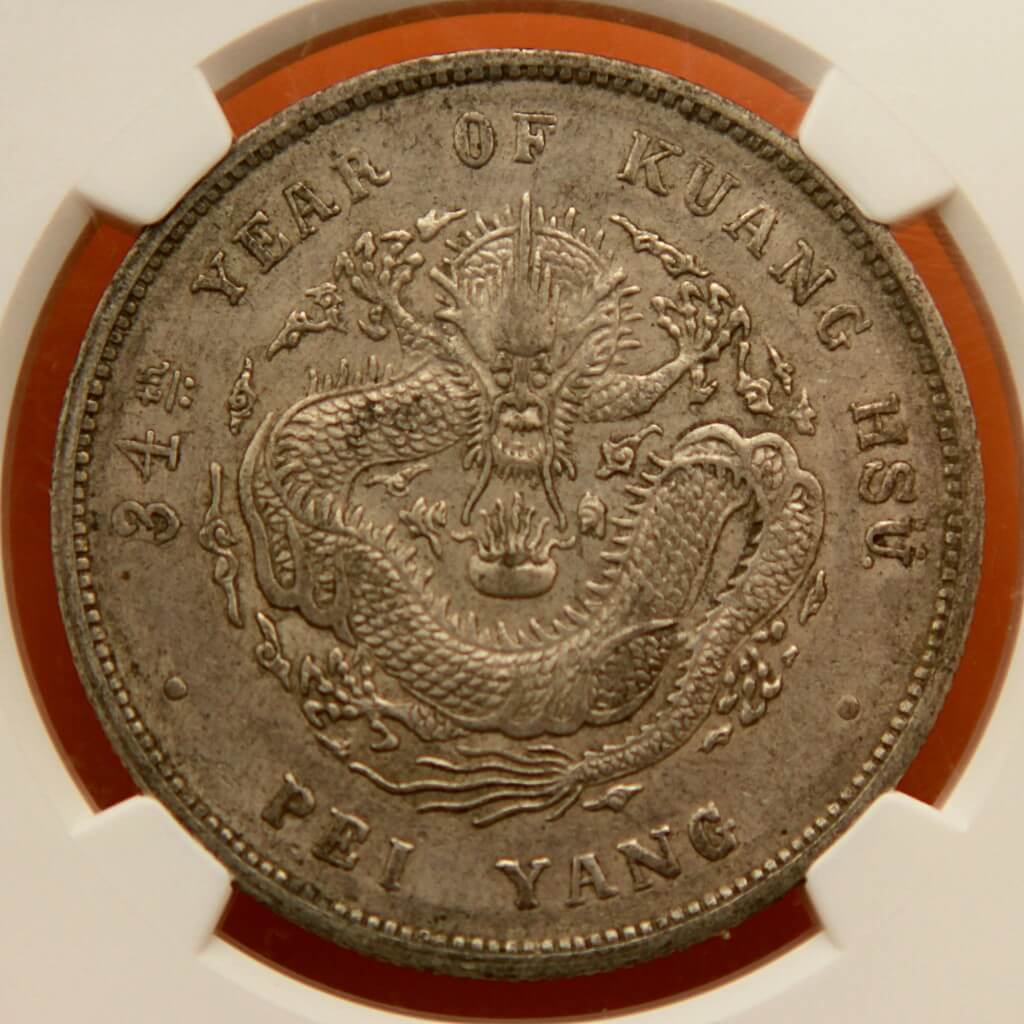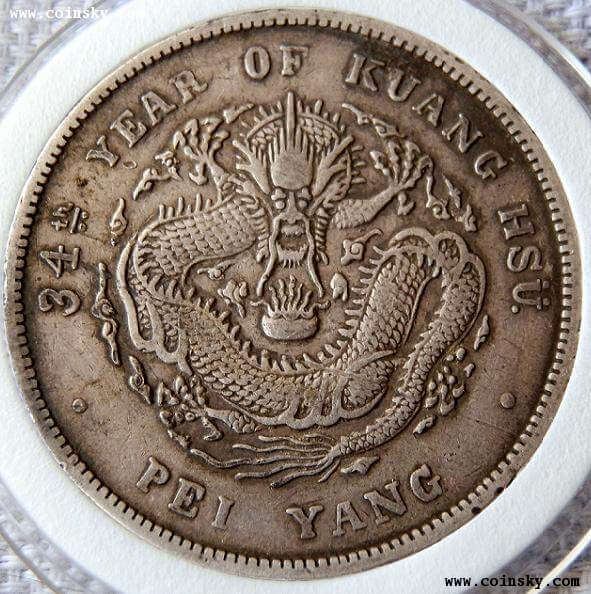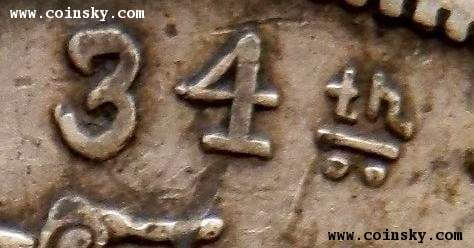In Winter 1932 the Fourth Front Army of the Chinese Workers’ and Peasants’ Red Army, mostly composed of survivors of the Nanchang Uprising and armed peasants from the Hunan province, escaped Chiang Kai-Shek’s siege of the Hupeh/Honan/Anhwei revolutionary base and entered northern Sichuan across Mt. Bashan. By early 1933, the Red Army controlled a 15,000 square kilometers area centered around the cities of Bazhong, Guangyuan and Nanchong, populated by over one million souls.
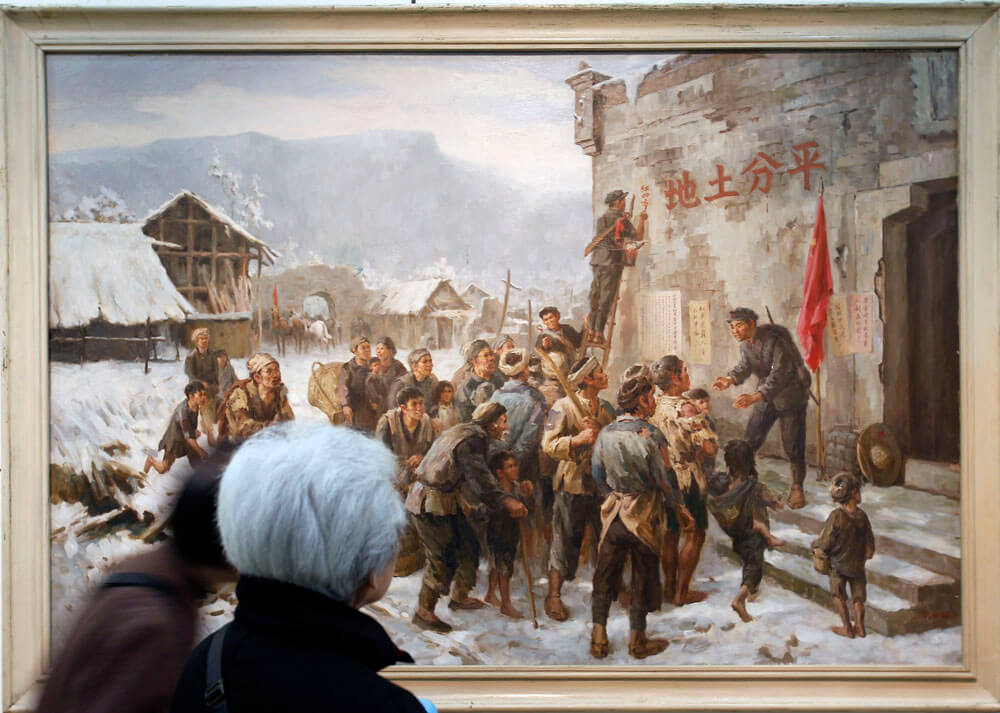
A 92-year-old woman looks at “The Red Army enters Northern Sichuan”, a 1957 painting from LIU Guoshu
Eighty years later, I was sipping tea in Nanchong while listening to my friend YI Chuanbi – his pet iguana perched on his shoulder – telling me of an old man he knew who had a perfectly preserved Szechuan-Shensi Soviet dollar and (for the right price) would be amenable to sell. Chinese soviet dollars are the thing of legend: their rarity and historical significance caused them to be highly sought after by collectors very early on. A Chinese Soviet dollar in uncirculated condition was already worth 1,000 yuan in the early 1980s, when YI was selling Szechuan dragon dollars 8 yuan apiece to buy games for his video game arcade business. Since then those prices have risen 20,000%, a performance comparable to AAPL shares during the same period!
Soviet dollars are in a class apart from other Chinese coins: they are revolutionary relics, just like the stone-carved slogans that the Fourth Army left in the Szechuan province. For many older Sichuan men and women, they are a direct connection to the heady days of their youth.
The Szechuan-Shensi Soviet dollar was struck in 1934 with hand-crafted dies at the Red Army Mint built in the Wangcang county (旺苍县) of Guangyuan (广元市), and were as much an instrument of propaganda as an instrument of payment. That politically charged currency, stamped with the symbol of the hammer and sickle spreading all over China and surrounded by the famous rallying cry “proletariats of the world, unite!“, was obviously banned and very dangerous to own in the territories controlled by the KMT or the Sichuan clique. For use in enemy territory, the Red Army Mint issued counterfeit Szechuan Military Government dollars instead. These fake coins, made with great care but with the same crude techniques used to produce the Soviet dollars, are easily identified by their hand-carved security edge and the concentric grooves on their surfaces.
(the Red Army version of the Szechuan 1912 Military dollar is worth $3,000 to $5,000 USD in XF condition)
Most of these Red Szechuan Military dollars and Soviet coins were melted down into less dangerous shapes after the Fourth Army retreated in March 1935 to join the Long March and the nationalist forces regained control of the area. The few remaining coins were often kept hidden, either due to the risk they posed to their owners, or out of the old-fashioned concern that the fewer people know of your valuable possessions, the better!
This combination of high desirability and elusiveness created ideal conditions for modern counterfeiters. Until smartphones with good camera became ubiquitous in China, very few collectors had access to anything better than low resolution pictures of genuine Soviet dollars, and even fewer had the opportunity to examine one “hands-on”.
Even for collectors with deep pockets, it is therefore difficult to find a Soviet dollar both in excellent condition and with a respectable pedigree, made crucial by the large number of very high quality fake coins circulating on the market. You can now better imagine my excitation when YI Chuanbi first told me of this opportunity!
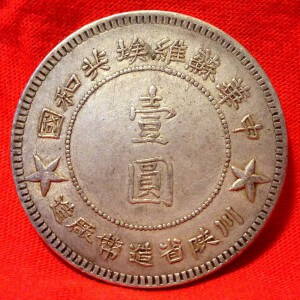
Szechuan-Shensi Soviet 1934 dollar (Kann 808 – Y-513 – L&M 891) (reverse) (graded AU55 by NGC)
In the end I did not succeed in buying that old man’s Soviet dollar in 2012, but after three years I finally managed to catch another one, pictured above. This Szechuan-Shensi Soviet dollar was circulated but is exceptionally well-preserved, with softly lustrous surfaces. More importantly, it has an unimpeachable pedigree: it is the plate coin for the “Crab pincer” variety (CSSB-Y2-4-02) in 《川陕革命根据地货币图录》, one of the most detailed books on the money of communist China.
It is a strange feeling to look at this heavy coin in the palm of my hand and think of the courageous men and women who carefully engraved dies and minted coins eighty years ago, doing their best despite the hardships and terrible conditions, with the hope of somehow contributing to change the world. Chinese Soviet dollars are truly a class apart.
Sometimes it feels as if it is the coins that find the collector, rather than the way around. Last month, a reader contacted me intrigued by a dragon coin he had unearthed in the woods around Riga (Latvia). He was used to find Russian coins, but this time it was a superb Large-Mouthed Dragon from the Fung-tien province that made ring his metal detector.
When I saw the pictures he sent me, I knew immediately that this beautiful coin with hints of verdigris and earthy surfaces was a genuine Chinese silver dollar, buried alive over a century ago. The Large Mouth dragon is a very rare variety of the 1898 Fengtien dollar, hard to find even in China. How did such a rarity end up in Latvia?
At the turn of the century, both the Liaotung peninsula (which encompassed most of the Fengtien province) and Latvia were under Russian rule. So it is very likely that the coin somehow traveled in the pockets of Russian soldiers or the coffers of merchants, from Port Arthur in Russian Manchuria to the Imperial Port of Riga in Latvia. It was lost or hidden there for a hundred years before being found by our fellow reader.
After more than a hundred years and against all odds, that rare Fengtien coin found its way back home to Northern China after I forwarded the pictures to a fellow Chinese coin collector in Shenyang who was looking for this variety to complete his set of 1898 Fengtien coins.
In these lucky encounters lies one of the most joyful thrill of collecting. Yesterday, I serendipitously found two charming bracelets made of genuine 3.6 candareens silver coins from the Szechuen province – in Bourges, France, out of all place. I did not expect to find Szechuan dragons while travelling abroad! While these holed coins have already lost all numismatic value, these bracelets are still fascinating artifacts:
They were brought to France by an Admiral serving in French Indochine before the First World War. This kind of jewelry was common in China at the time: smaller silver coins were fashionned in buttons to fasten the coat of wealthy merchants, sequins on bridal headdresses, or bracelets adorning the wrists of beautiful women. Along with the two bracelets came a moving black and white photograph of their former owner, framed in carved fragrant wood. According to the handwritten note behind the picture, it was taken in Chongqing in 1906:
It is rare to have such a precise idea of the provenance of the coins we collect. These lucky bracelets which were brought to France in a military corvette will soon return home to China, in my pocket as I fly back to Beijing.
Most of you likely have or have seen a 1908 Chihli dollar. It is one of the most commonly seen Chinese silver coins due to its relatively high mintage, it is also one of the most affordable, and it is therefore many a collector’s “first dollar”.
The famous dragon with its wide, crocodilian grin and delicate scales has more to offer to the devoted collector than it appears: while the Y73.2 type that everyone knows is abundant, the varieties currently filed by default under the Y73.4 catalog number are both excitingly rare and hard to find in good condition. There is also scant literature about them in English.
Advanced collectors will already know about the “crosslet 4″ or “fancy 3″ varieties that sometimes appear in auctions, but these labels currently conflate merely scarce varieties with extremely rare ones. For example, the coin below, labelled as “Fancy 3″ is actually called 北洋肥3 in China (“Pudgy 3″ in English):
This very rare variety in AU condition is worth ¥60,000 yuan Renminbi, almost $10,000 USD. This is an order of magnitude more than common “Fancy 3″ varieties, like this coin sold at Baldwin’s Hong Kong auction 48 in 2010:
Even holders labeled as Y73.2 can be full of surprises. Consider this coin from my collection, which I bought in an NGC holder with the grade AU55. An oblivious collector might dismiss it as banal, while it is actually the best known specimen of the extremely rare 丑3 variety (literaly “ugly 3″ in Chinese) and is worth north of ¥80,000 yuan Renminbi ($13,000 USD).
This variety is the rarest of the whole 34th year of Kuang Hsu series, with only a dozen of coins found across China. It is the missing link between the early “Fancy 3″/”Cross 4″ Y73.4 varieties, which use a typeface similar to the 33th year of Kuang Hsu, and the classic Y73.2 typeface. As awareness of this historically significant variety grew amongst Chinese collectors, an even rarer subtype was discovered last year:
Only a few coins with this flatter 3 have been discovered, all in VF conditions. So, dear readers, keep your eyes peeled and do not look down upon common types. Like in the story of the Ugly Duckling, appearances are often misleading: the Homely 3 which had been handled as a banal Y73.2 Chihli dollar has already risen to the rank of numismatic star.
